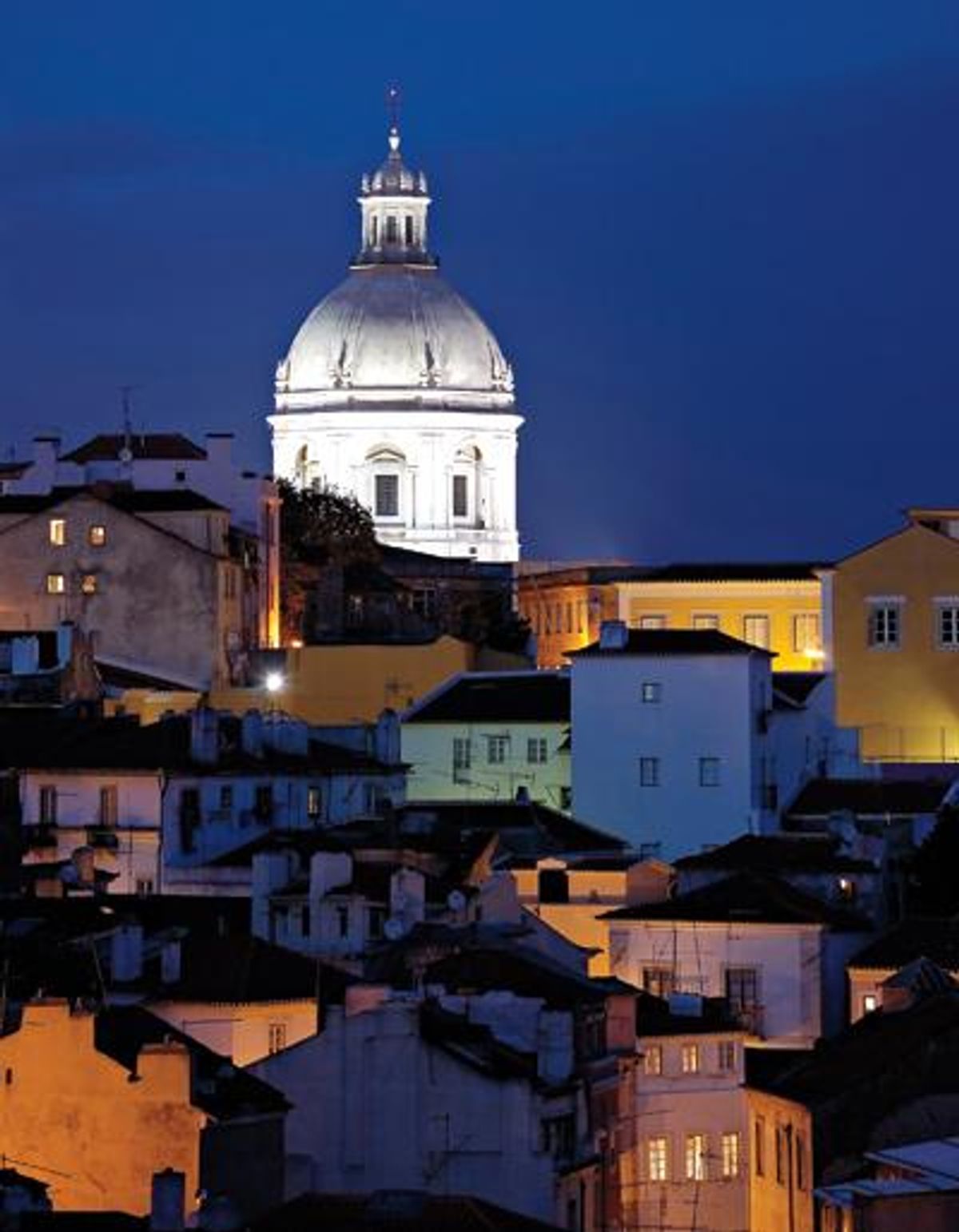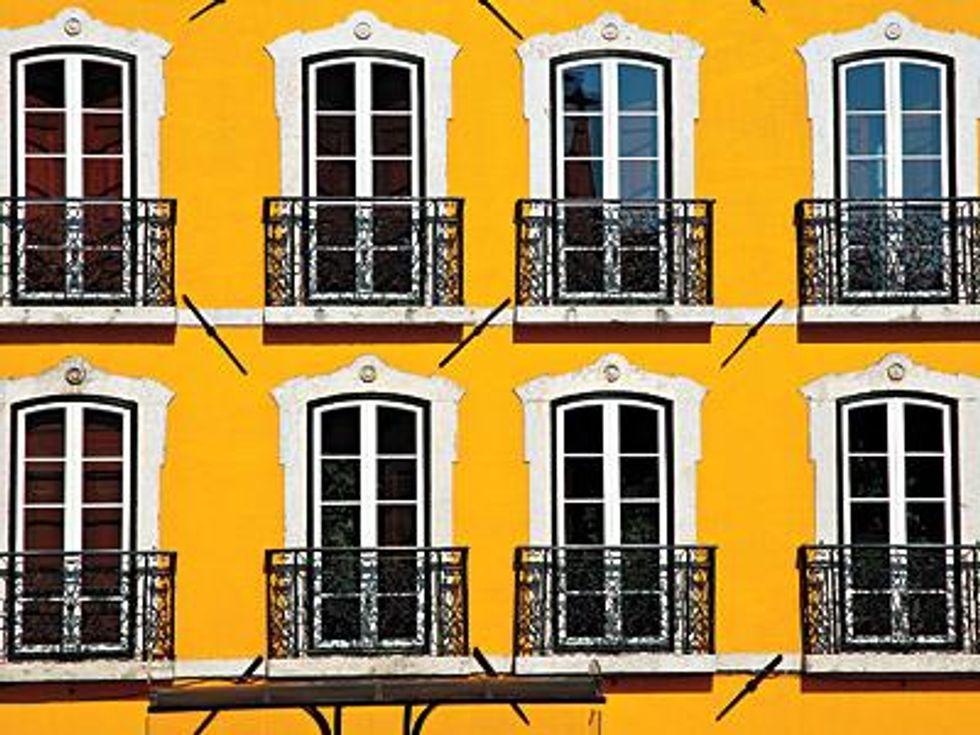
Portuguese is a romance language -- appropriate given how easy it is to fall in love with the country and its people.
September 13 2012 3:50 AM EST
November 17 2015 5:28 AM EST
By continuing to use our site, you agree to our Private Policy and Terms of Use.

"We have gay marriage? That's great," remarked a straight Lisbon native as we stood on the street drinking caipirinhas (a cocktail made with sugarcane rum, muddled lime, and sugar), in the Bairro Alto section of the city.
In 2010, Portugal became the eighth country in the world to legalize same-sex marriage. And looking around at my fellow revelers -- a mixed group of ages, nationalities, and sexual orientations all greeting each other, listening to music, and nattering boisterously -- I quickly realized that her surprise had less to do with a lack of awareness and more to do with LGBT rights not being the hyperpoliticized issue they are in the Unites States.
Evening activities start late on weekends: The crowds arrive at the bars around midnight and carry on until the wee hours of the morning. So a few hours later and one neighborhood over in the Principe Real, we decided to hit up two of Lisbon's gay bars, WoofLX (WoofLX.com), which has an amiable crowd and cute bartenders, and its more provocative cousin, WoofX (Facebook.com/WoofX), which has a dark, fetishy vibe and a backroom.
"The Portuguese people are very tolerant," said Rodrigo, WoofX's sexy manager, continuing our conversation about LGBT rights and the legalization of marriage. "In 1974 we had a peaceful revolution [to overthrow an authoritarian dictatorship]. I think it is from this moment in our history that we learned to respect personal freedom very much."
Traveling alone to a new destination, especially abroad, can sometimes be a very solitary experience, but this was definitely not the case in Portugal. Lisboans (and, the Portuguese people in general) are friendly, warm, and welcoming. They are also incredibly attractive. Which is probably what makes chatting up locals, meeting new friends, and staying out so late an easy thing to do.
Of course, there is plenty to do in the daytime too, and the city is, for the most part, walkable. That said, in some kind of M.C. Escher-esque fashion, no matter which direction you go, it somehow always seems to be uphill on cobblestone. So pack plenty of comfortable shoes.
To help navigate the most difficult parts, Lisbon offers a street elevator, numerous streetcars, and three funiculars (tram-like vehicles that take passengers up steep slopes). That street elevator, Elevador de Santa Justa, is one of its most recognizable structures. Built in 1902, the elevator not only offers great views of the city but also allows direct access from the downtown Baixa area to the elevated Chiado district, a beautiful section of the city that in the 19th century was a meeting point for artists to discuss new ideas and is now home to some striking architecture and great shopping.
While in the Chiado, stop in at the incredibly charming A Vida Portuguesa (AVidaPortuguesa.com), a well-curated space that carries some of the most amazing and beautifully crafted bath products, home accessories, and foodstuffs fashioned in Portugal.
When all shopped out, head across the city and up an opposite hill to visit the Castelo de Sao Jorge, with its outstanding views of the Alfama (Moorish) quarter and Tagus River.
Porto
After a few days of hardcore cardio-sightseeing and late nights out, I was ready to head north to Porto for something a bit more relaxed.
The train trip through the bucolic Portuguese countryside, filled with pastures of those extra-fluffy sheep that seem to exist only in Europe, is verdant and delightful but the arrival into Porto a few hours later is breathtaking, with its stunning views of terra-cotta-roofed buildings rising up on hills that span both sides of the Douro River.
With over 300,000 residents, Porto is the second-largest city in the country and one of the oldest in Europe. Named a World Heritage City in 1996 and a European Culture Capital in 2001, Porto boasts an incredibly rich variety of galleries, museums, concert halls and cinemas. The Contemporary Art Museum of Serralves (Serralves.pt) and a walk through its surrounding gardens are a definite must, as is visiting Rua Miguel Bombarda, with its countless galleries, tearooms, and nifty stores stocked with locally designed clothes and furnishings.
And then, of course, there's the port. Head across the river to Churchill's (Churchills-Port.com), one of the newest port wine companies, which is known for its "boutique" size and quality lineup. Try a sampling in the tasting room and then purchase a few bottles to bring back to share with friends.
While you're across the river, continue to check out other wines from across the region during dinner at the Yeatman Restaurant (TheYeatman.com), located in a five-star, wine-centric hotel. Chef Ricardo Costa's boldly inspired menu features items including pistachio-crusted stone bass and swordfish marinated in citrus fruits. It also earned him Porto's only Michelin star in 2011.
On my last night in town, I headed to Pride Bar for a nightcap. Located (not surprisingly) uphill, the bar is easily recognized for its rainbow flag next to the door. Inside: great drinks, fun music and a quite a few cha-cha-ing drag queens.
Portuguese is a Romance language for sure, as evidenced by how easily I fell in love with the country and its people. Relatively inexpensive and largely undiscovered by Americans, Lisbon and Porto have tons of great sights and experiences perfectly suited for LGBT travelers and their friends.
 How to get there:
How to get there:
Viral post saying Republicans 'have two daddies now' has MAGA hot and bothered